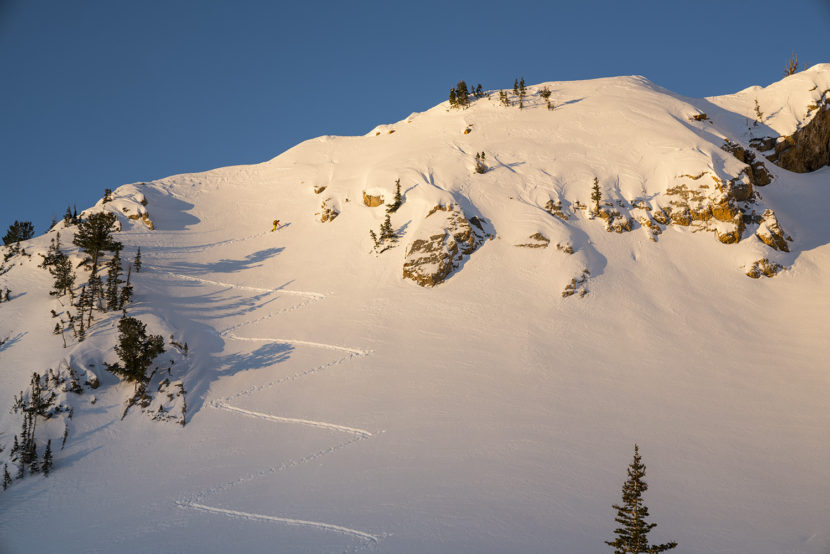
Responsible Outdoor Recreation During the Coronavirus Pandemic
This is a rapidly evolving situation and things are going to be changing quickly. This guide may not be applicable in a few days.
This information was gathered, in part, from an interview with University of Utah epidemiologist, Dr. Lindsay Keegan, to help disseminate information about Coronavirus or COVID-19 to outdoor recreationalists. Here’s a video of our chat.
These are some considerations/ideas for responsible outdoor recreation and social media messaging for people in the United States.
- If we don’t respect social distancing at trailheads and on trails, they could close. So let’s be proactive and set a good example.
- Be sensitive to the fact that people in many places are in lock down. While people there can go outside for walks, they may be limited in how far they can go to get to trailheads. Other areas may be following and restricting movement.
- Keep in mind Instagram is a global platform so people in Europe are experiencing something different than we are in the USA right now.
- Look at Italy to expect what we are going to see in the US in a few weeks.
- As the virus spreads in the USA, the healthcare system is going to become overloaded. That means if you tear your ACL or break your back, there may not be a bed for you. If you do require hospitalization, it might be at the expense of someone else’s parents or grandparents.
- Keep this in mind as you talk about skiing. This isn’t the time to send it off a cliff, tackle that big project or set a FKT. Going for long hard days can weaken your immune system.
- People are sad right now that the resorts have closed. Be compassionate.
- This also isn’t the time for people who have never backcountry skied to learn. Pick objectives that are well within your ability level.
- This is also not the time to go on a road trip to rural areas as their hospitals will also be over capacity.
- Consider taking a break about posting in real time about skiing at all during this time and stay home whenever you can. Think about how you can serve others while still maintaining social distancing.
- Cancel all non-essential travel.
- Going on a ski tour with one or two people is a good compromise, but practice strict social distancing. That means six feet apart. Don’t gather in closer to talk, as we spewing viral particles that transmit diseases when we talk.
- Avoid being in a large group. The more people you come into contact with, the more risk you are at, and the more you put others at risk.
- Here’s some info from Lindsay Troy:
- People without symptoms can be testing positive.
- We don’t know how long closures and social distancing will last. The better we are at it, the longer it will take.
- When we say flatten the curve, what does that mean? The curve is the epidemic curve, the number of people affected each day. With a typical disease, you see exponential growth, and then it drops off. Health systems are not built to withstand massive numbers of people coming into the hospital. We want to flatten the curve, but when we don’t that, we don’t actually change the total number of infections that much. We just make it so everyone doesn’t get affected at once. Flattening the curve helps the healthcare system and workers because it means there will be beds available, protective equipment for the doctors, ventilators available. If we let it burn through the population really fast, the closures will be shorter, but more people will die in a traumatic way. It’s a tradeoff.
- Coronavirus does affect young people. You could have a mild infection, severe flu, and/or potentially pneumonia. It can lead to a serious hospitalization for young people. When you think, I’ll just go skiing, I’ll just go climbing, it’s not a big deal, think about if you have the healthcare coverage to pay for a few days stay in the ICU. Also consider that if you get pneumonia, it’s going to put you on your back for awhile. Your summer sports season is not going to be good as your lungs will be recovering and your muscles will lose mass. You aren’t going to bounce back as soon as your fever goes away. Some people will get mild infections but from what researchers know about SARS, there’s evidence of long term lung damage (perhaps even permanent lung damage) from the pneumonia that you get associated with SARS. It’s like a respiratory virus crossed with HIV because it has such severe impacts on your immune system. It’s not something to take lightly
- This is a serious public health threat. Even if your personal risk isn’t high, the risk to people you know and care about is. Grandma, your neighbor, your friend who is immunocompromised, someone who has cancer. We all know people who are older and whose lives are at risk. You might walk out of this totally fine. You might get a bad flu, with pneumonia and recover in six weeks. You could be back skiing in six weeks, just like you were yesterday. Or you could kill your grandma.
- It’s hard to evaluate your own personal risk. It’s hard to evaluate these pandemic situations because they are so rare. People are dying from this. People will die from this. If we all act according to social distancing and try to have some compassion for our neighbors, we can kill way fewer people than are projecting. Models are projecting worst case scenarios right now. Let’s make the models wrong.
Thanks to Backcountry for supporting this message. I’m grateful to work with brands who are willing to be flexible when content plans change.